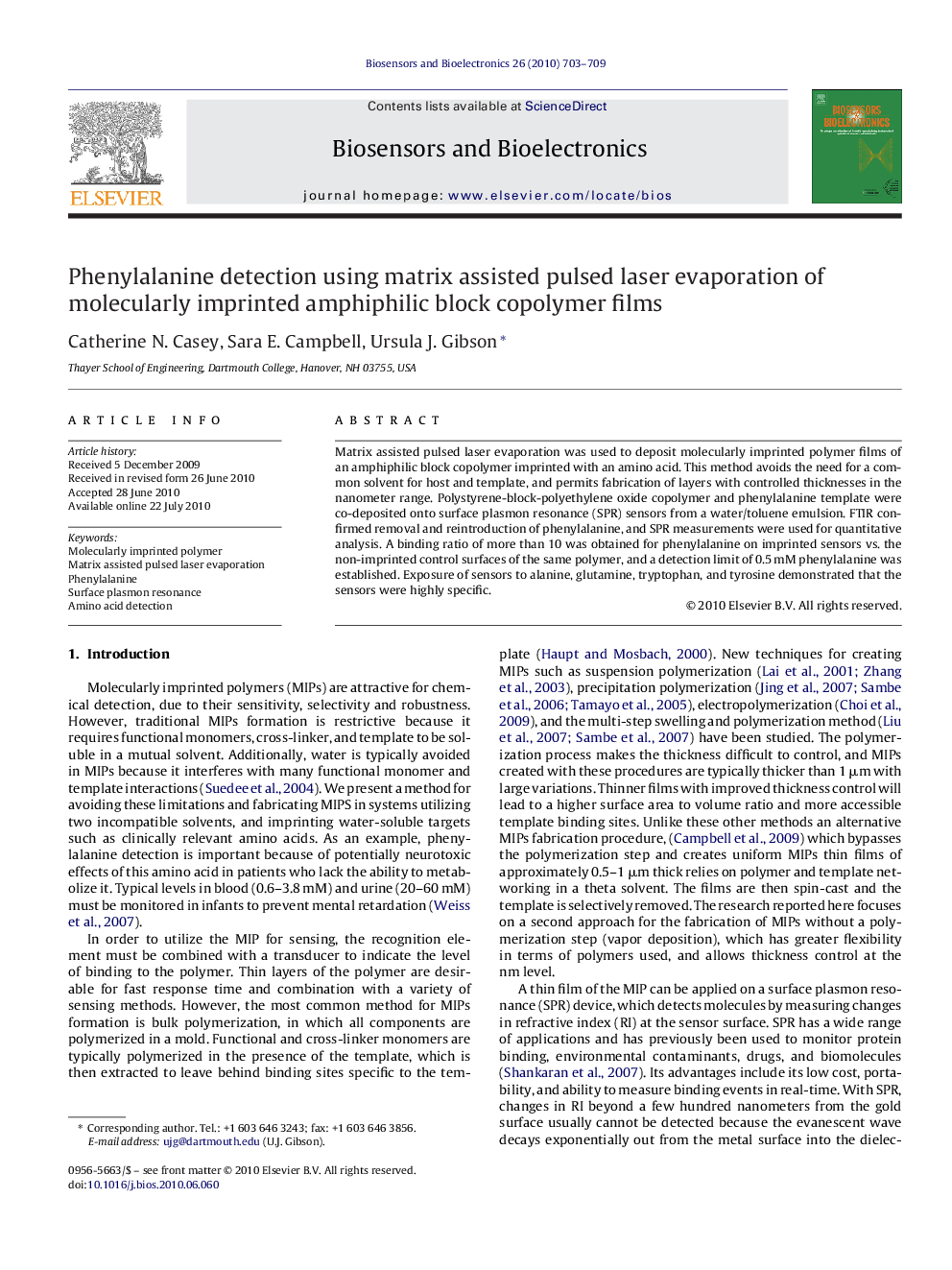| Article ID | Journal | Published Year | Pages | File Type |
|---|---|---|---|---|
| 868595 | Biosensors and Bioelectronics | 2010 | 7 Pages |
Matrix assisted pulsed laser evaporation was used to deposit molecularly imprinted polymer films of an amphiphilic block copolymer imprinted with an amino acid. This method avoids the need for a common solvent for host and template, and permits fabrication of layers with controlled thicknesses in the nanometer range. Polystyrene-block-polyethylene oxide copolymer and phenylalanine template were co-deposited onto surface plasmon resonance (SPR) sensors from a water/toluene emulsion. FTIR confirmed removal and reintroduction of phenylalanine, and SPR measurements were used for quantitative analysis. A binding ratio of more than 10 was obtained for phenylalanine on imprinted sensors vs. the non-imprinted control surfaces of the same polymer, and a detection limit of 0.5 mM phenylalanine was established. Exposure of sensors to alanine, glutamine, tryptophan, and tyrosine demonstrated that the sensors were highly specific.
